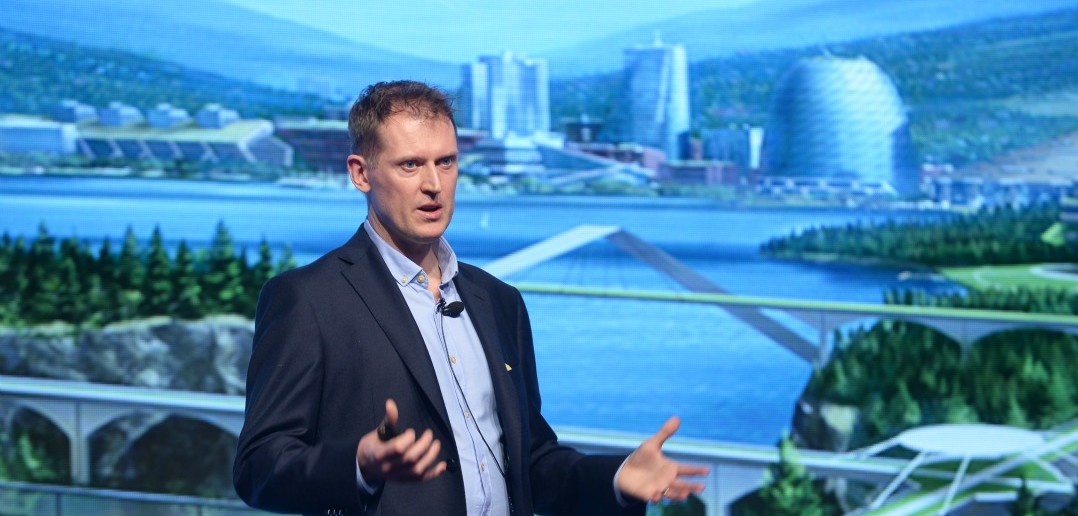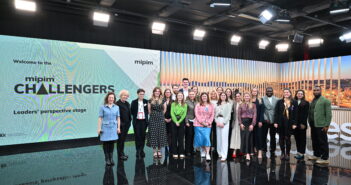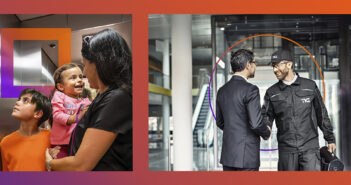In this post, Benjamin J Butler — futurist and CEO of the Emerging Future Institute — is beamed back from 2025 to tell us what happened. This is based on his talk at MIPIM Asia on December 2, 2015.
I am back from 2025 to let you know how we – humanity – are doing. And give you a few other tips.
According to Greek mythology, at the beginning of time – in fact, before time or Chromos existed – there was Chaos. This was the Divine state, from which anything was still possible. From Chaos came, Gaia or Mother Earth. Gaia represented order and through her the universe was born. Life, then was the dance between Chaos and Gaia.
So back in 2015, I was writing about the Great Paradox that we faced, the concurrent existence of both the forces of order and disorder. On the one hand, it felt that we had entered a new golden age of entrepreneurship and that science and technology were advancing exponentially. The founder of Singularity had said that we were living in an age of 20 Guttenberg moments – AI, nanotech, virtual reality, biotech breakthroughs – the list goes on. The Enlightenment of Europe was based on the clash of ideas in the cafes of Europe, with the internet enabling a global clash of ideas – the true source of creation – on a global scale.
On the other hand, geo-politics were worsening with a NATO country shooting down a Russian jet for the first time since the 1950s. There was a refugee crisis in Europe. Societies were unstable with the gap between the rich and the poor (the Gini co-efficients) were at historically large numbers raising tension and made it difficult for many to make ends meet. People were resorting to increased escapism and we were facing a pandemic in addiction: pharmaceutical drugs were a real problem and in the US Heroin deaths had risen 400% in 10 years. I also wondered whether the social media addiction was also not a form of escapism? Societies seemed like a tinderbox.
Then there were financial markets. Reflecting the onset of global recession over the previous 18 months financial markets were starting to resemble the so-called critical state in complexity theory, like the unstable snowpack that exists before an avalanche. One just doesn’t know which snowdrop could catalyst a large avalanche. Oil prices had more than halved (the cheapest rates were down to 20 dollars per barrel!), a G7 Currency (namely the Swiss Franc) moved an unprecedented 40% in one day, shipping rates had plummeted (the baltic dry index was its lowest EVER and some tankers were floating around apparently aimlessly trying to find a home), liquidity was drying up in major markets even treasuries, the NYSE had mysteriously stopped trading for a few hours and the the EM countries, especially BRIC, were all suffering from severe economic stress. But the US stock market – still regarded as a barometer of the health of the global economy – was still near its highs. Unbeknownst to most investors it was largely stock buybacks that were driving the market, because CEOs were not optimistic enough in their operating environments to spend more money on capex along with M&A activity. Margins borrowing on the NYSE also made up 25% of all commercial loans in the US. Also a narrower and narrower group of stocks was driving stocks. In a large mass act of cognitive dissonance market commentators were applauding the Federal Reserve for raising rates as a soon that the US economy was recovering…
Short term, it seemed that disorder would take the lead. At times in 2015 – especially when in the energetic cities of London, Singapore or HK I felt like I was in the hedonistic Pompei before the explosion of the volcano Mt. Vesuvius. There seemed to be a big disconnect. Many business people continued to pick up nickels in front of the steamroller.
I am glad to report that we made it into 2025 and the world is at peace now – in fact life is pretty good now. On the way to work I can chill out in my driverless car and watch the news and answer emails (using Lifi – which is 100X faster than 2015’s wifi). I am still meant to be awake at least when the car is in motion but that law will change soon we think. My daughter is unlikely to ever drive : its kind of seen as archaic by the younger generations. We don’t type as much as we did before, I generally talk to my phone or watch through Siri to give instructions from online banking to emails.
My house has now gone all high-tech with the IoT (internet of things). Everything talks to each other and the house regulates itself. Of course, I talk to “Jeeves” who is the robot that runs my house as well – directing the temperature, lighting etc is its not already been made to my liking. We were one of the early adopters of a house robot, but most of my middle class friends now have one or are in the process of buying one now. But nature has also been brought into the cities- there are more plants and more gardens than you would imagine as the world has embraced an “Earth” consciousness. Cars are less the centre of cities as before – many more banned cars in the centre or put them underneath the city like Masdar did all those years back. In fact, biomimicry – studying and copying nature’s genius – has really turbo-charged many advances in technology. Steve Jobs’ comment that the “the biggest innovation of the 21st Century will be at the intersection of biology and technology” seems quite prophetic looking back. And bigger changes are afoot. New Scientist magazine this week is now talking about a new form of energy whereby solar panels in space beam energy back down to the ground.
So what happened?



